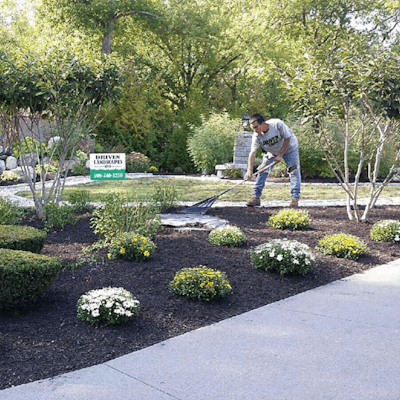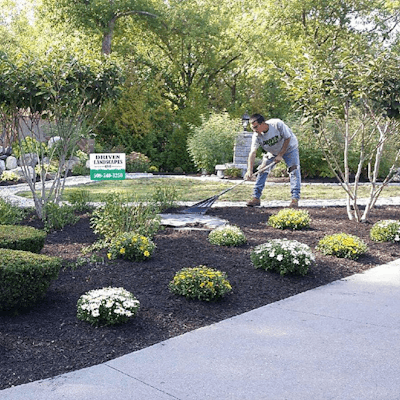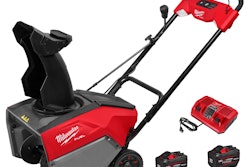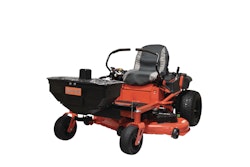
 Photo: Driven Landscapes
Photo: Driven LandscapesStatistics from an IBIS World market report show that there are more than 500,000 professional landscape businesses operating in the United States, generating annual revenues of $78 billion in2017 and employing nearly one million people. On the surface, the industry is booming.
The underlying numbers paint a different picture, however. The U.S. landscaping services industry is highly fragmented, with the top 50 companies generating about 15 percent of the total revenue. In fact, the majority of these businesses plateau and stop growing, and data shows that as many as 44 percent generate less than $200,000 in revenue per year.
So, what’s the problem? More importantly, what’s the solution? While there are a number of factors that affect market authority, one that’s profound is the inability to maintain and foster sustainable and scalable growth.
Growing too fast, and without structure
The business has landed a few commercial contracts, tons of residential referrals and is growing at a breakneck pace. Great, until it’s determined that proper operating systems haven’t been established to sustain that growth, and it’s a mad scramble to install them on the fly. For independent business owners whose plates are already full with managing day-to-day operations, that can be a hefty task.
One of the biggest hurdles owner operators face when growing rapidly is hiring trusted employees. Especially for independent business owners, it can be tough to let go of the reins and entrust the business in the hands of field managers and crew, especially when one bad hire can have devastating results.
However, implementing a hiring system is the best way to make smart decisions each and every time. By creating detailed profiles for each available position, a business owner can confidently assess candidates and make the right hire, not the desperation decision. Once the employee is in the system, extensive training, detailed written documentation and a robust operating procedure ensures that businesses are able to maintain premium results without interruption.
Focusing on the big catch
While many landscape businesses prioritize snagging the “big catch,” or large commercial client, it’s often more fruitful to catch an abundance of small fish in the form of residential clientele. It’s true that commercial contracts can come with profound paydays, but an extensive bidding process that pits independent owners against one another at the expense of price matching and gouging also accompanies them.
Instead, a focus on residential business comes with the potential for more robust profit margins, increased loyalty from clientele and a better and larger referral network via those satisfied clients. With a large network of residential clients, no one piece of business represents a large source of revenue, helping to lay a solid foundation that may not be feasible in the commercial business — lose that major commercial player, and kiss that revenue goodbye.
Ineffective marketing
In today’s digital-centric world, poor quality marketing materials or a poorly functioning website can erode trust and turn off prospective customers. In addition to keeping these on point, prioritizing a local marketing effort is paramount to the success of a landscape business.
Search engine optimization (SEO) should be the heart of any localized marketing campaign. While there’s certain complexity to driving a business to the top of search results, there are few tried and true principles that offer a great start:
- Google My Business: Google My Business optimization can make or break a consumer’s ability to find a business on the web. First and foremost, having a properly detailed business page is a must. That page should include the business name, address, phone number and proper categorization. Then, identify any duplicate business pages and remove them to verify the true listing.
- Surrounding area meta-descriptions: While never a shoe-in, business listings should also include surrounding cities to increase findability and the likelihood that a searcher will discover a location when they pinpoint the city they want to explore.
Moving forward
It’s clear that the landscaping industry is profound. But, it’s also evident that it’s highly fragmented. For business owners looking to grow at a scalable and sustainable pace, a system of processes and support is a must. Whether that’s independently, or through the support of an existing franchise system, there are certainly more opportunities to grab a piece of the pie, or in this case the turf, by growing intelligently, prioritizing residential clientele and marketing effectively.
EDITOR’S NOTE: This article was written by Jonathan Orcutt. Orcutt is the founder and president of Driven Landscapes, a franchise landscaping company in Massachusetts. Orcutt founded Driven Landscapes in 2012 with the mission to build a landscaping company that prioritizes customer service and professionalism, without having to endure the physical labor most landscape owners contend with for years – or even decades.










